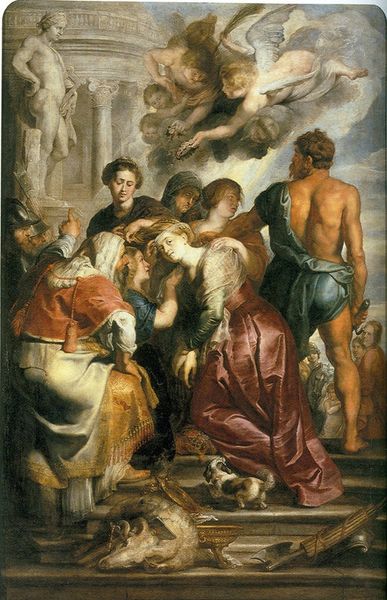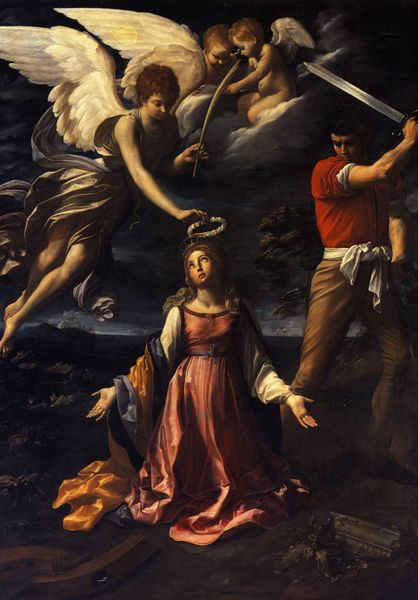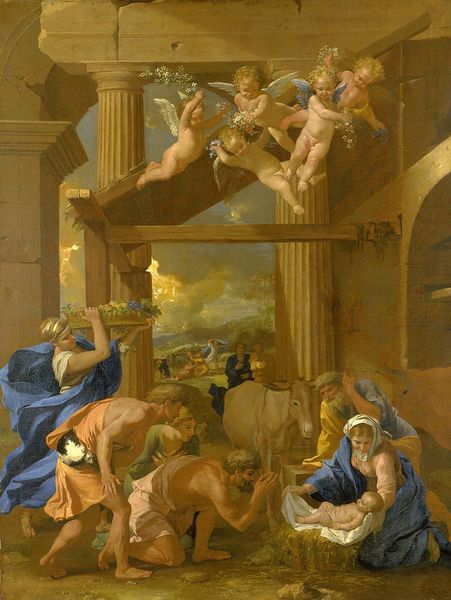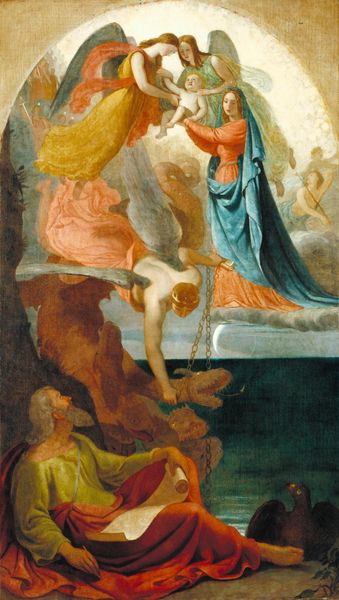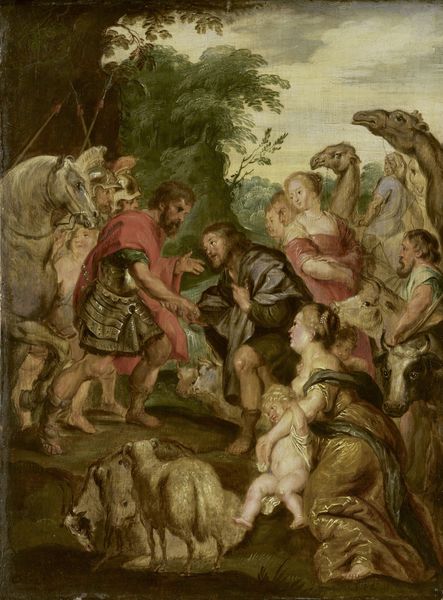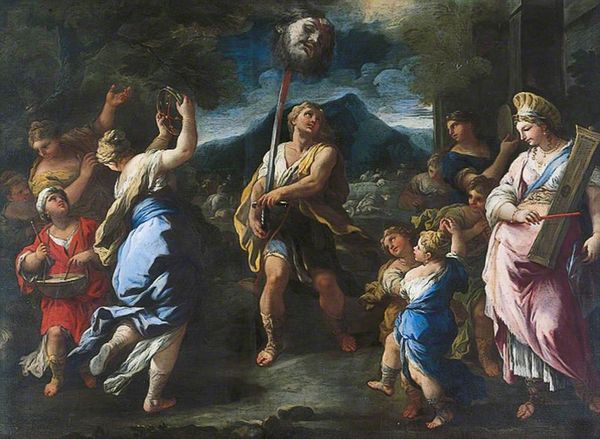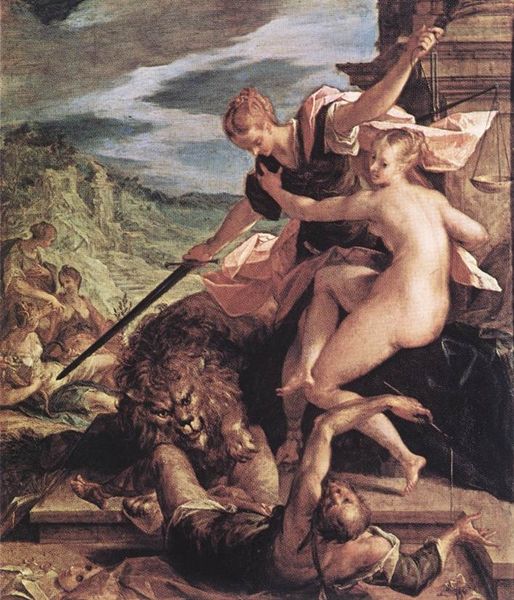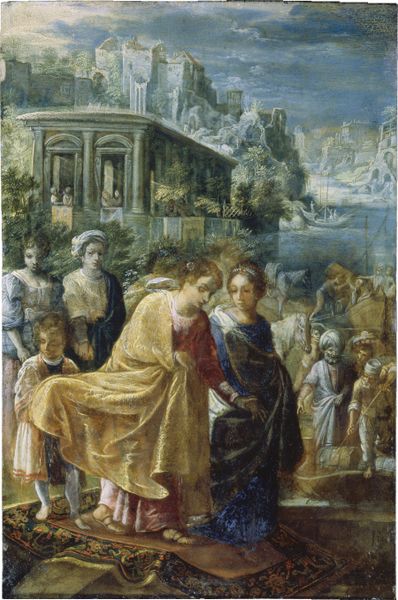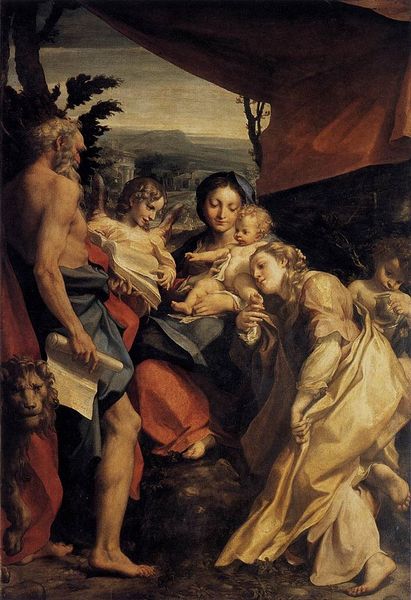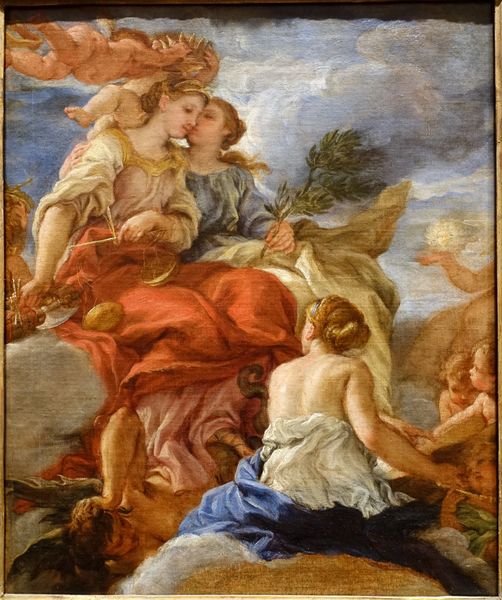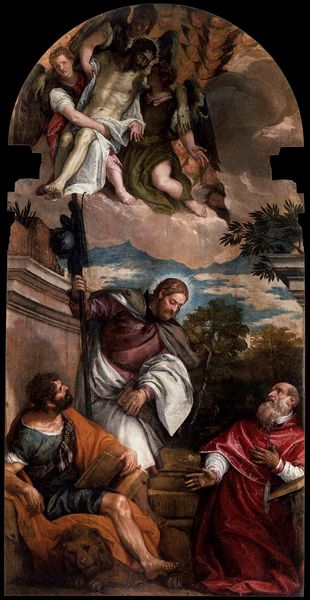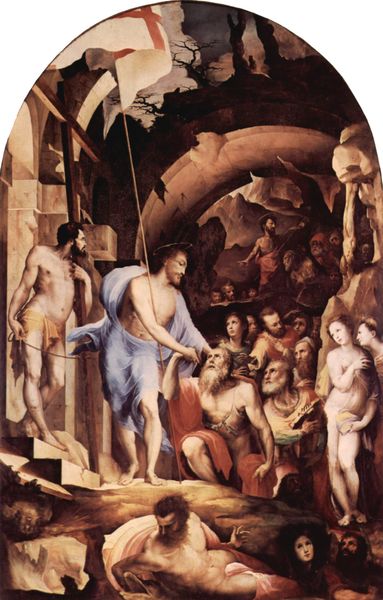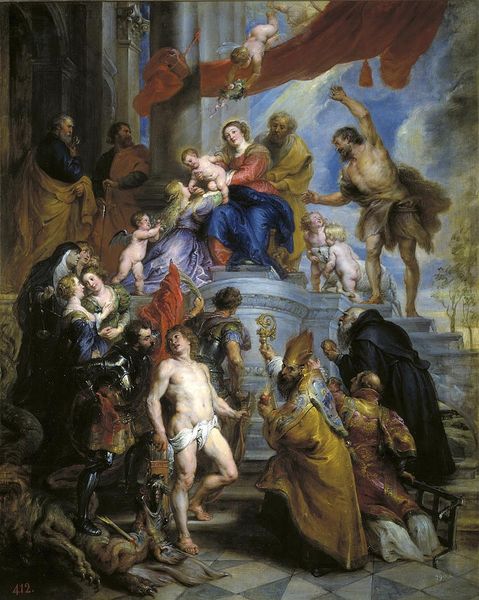
painting, oil-paint
#
portrait
#
allegory
#
painting
#
oil-paint
#
mannerism
#
oil painting
#
history-painting
#
academic-art
#
portrait art
#
fine art portrait
Copyright: Public domain
Curator: Bartholomeus Spranger painted "Allegory on the Fate of Hans Mont" in 1607. This oil painting invites us to consider the historical and political circumstances of its creation. It seems crowded and unsettling. What strikes you first? Editor: The sheer number of figures vying for attention. It feels like a stage crowded with characters—almost too many. There's a clear division; some are illuminated, and others are cast in shadow. Curator: It is certainly a stage—a carefully constructed allegory that serves as a memorial, commissioned to rehabilitate the image of Hans Mont after his execution. Note the angel poised above the city, possibly Prague, offering a laurel. It's a dramatic gesture in support of Mont's legacy. Editor: So it’s a PR move, masked in art? The laurel seems to be correcting the official record of Mont, placing him amongst the heroic figures represented by all the portrait busts. And what is it saying with these huddled figures on the stairs? Curator: Precisely. Consider the sociopolitical climate. Mont was executed for alleged involvement in a conspiracy against Emperor Rudolf II. This painting aims to recast him as a victim of injustice and to secure his family's position within society. The figures huddled at the base—presumably representing the public, the figures he served in government and public affairs, the witnesses, or those directly affected by Mont’s deeds. Spranger uses visual cues to manipulate public memory. Editor: Right. And who are these female figures looming over them? One of the women guides and protects these broken and poor-looking people that form the very front of this canvas. Their direct presence, so intimate compared to everything happening in the background, gives a strong feeling of safety and justice. Curator: It is my read of the artwork, indeed. These allegorical women appear to act as the guides to what justice really means in Mont's political agenda, perhaps reflecting prudence and reason prevailing over political injustice? Editor: This creates so much interesting nuance to this picture... Are the artists working towards a reconciliation through symbolism and representation, a potent claim amidst potential accusations and rumors? The artist is literally trying to control his subject. Curator: Absolutely. By acknowledging complexity, an allegory is more thought-provoking. It can appeal to the diverse audience the museum reaches today! Editor: It also feels important to keep interrogating whose history gets told, and *how*.
Comments
No comments
Be the first to comment and join the conversation on the ultimate creative platform.
